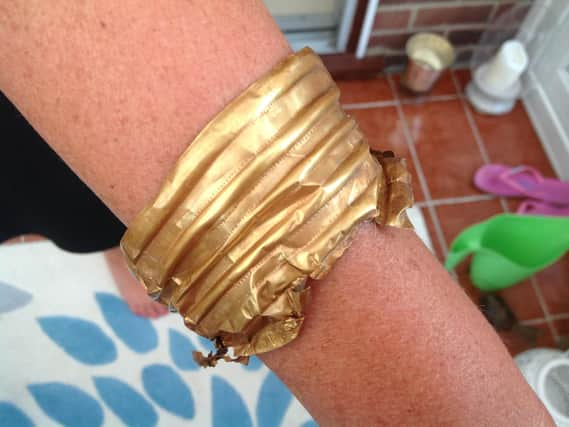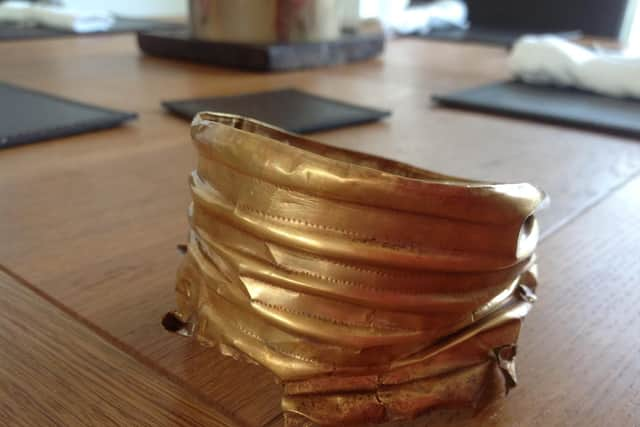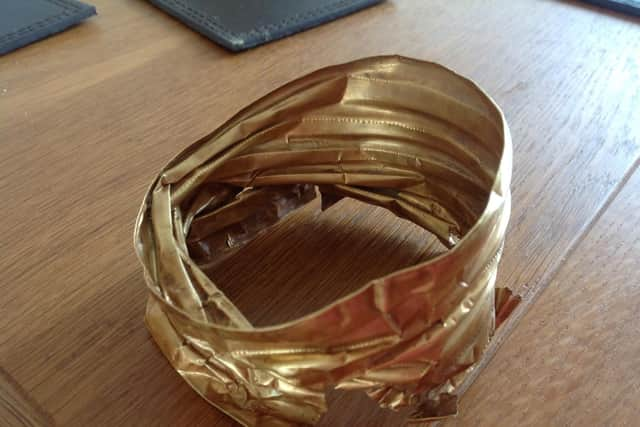Detectorist strikes gold finding 4,000-year-old jewellery in East Yorkshire field


Trevor Sherwood who had previously only ever found a few Roman coins and bits of farming equipment on the land stumbled across the hidden treasure buried over a foot deep in the field.
Sadly the beautiful piece of jewellery, which has been dated to 2100-1900BC - had been damaged by ploughing.
Advertisement
Hide AdAdvertisement
Hide AdFarmer Andy Watson said: “I couldn’t believe it when he knocked on the door with it. It’s as light as a feather.


“It had been about 18 inches deep in a field that had been potatoes which we cultivated a bit deeper than normal.
“His girlfriend put it on - it was 4000 years since the last person wore it.
“I think it was for a woman - she wouldn’t be dancing around with just one so I’ve told him to go and find the other one with the earrings to match.”
Advertisement
Hide AdAdvertisement
Hide AdExperts at the British Museum say the piece of early Bronze Age jewellery, which is decorated by embossed ribs and rows of very precise dots or pointillé, is one of only five ever found in the UK.


Coroner Prof Paul Marks declared the bracelet treasure at an inquest in Hull on Wednesday.
Mr Watson said he and Mr Sherwood had a gentleman’s agreement, and would share whatever the piece fetches. He hopes it will go on display in a local museum.
He said Mr Sherwood would spend a week searching his land after harvest and find bits and pieces he had lost - keys and tractor parts.
Advertisement
Hide AdAdvertisement
Hide AdHe said: “Trevor is over the moon. He said he’d been doing it all his life and never found anything really. I am pleased for him.
The inquest heard that the armlet, which was found on August 28 2016, weighed 13.85 grammes.
It is made up of 82 - 84 per cent gold, 14 - 16 per cent silver and 1.5 - 2 per cent copper.
It is similar to one found when a barrow was excavated in Lockington, Leicestershire, in 1996, while another was found in Cuxwold, Lincolnshire.
Advertisement
Hide AdAdvertisement
Hide AdGold artefacts were prestige items reflecting the high status of those who wore, or were buried with them
Prof Marks said: “What is noteworthy is that it contains between 82 to 84 percent gold and 18 carat gold the most pure form is 75 per cent gold.”
The armlet was distorted, probably by soil pressure and one side was damaged by plough action.
Prof Marks said its composition - gold is a very soft metal - could have explained its “sad degradation.”